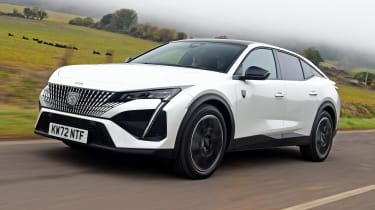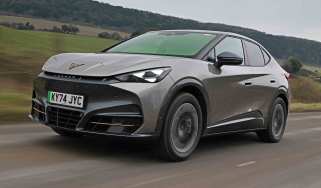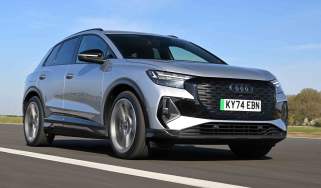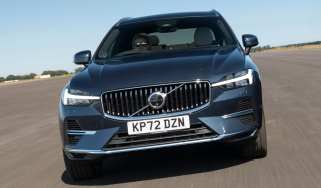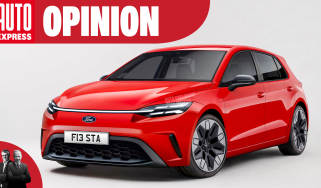Peugeot 408 review - Engines, performance and drive
The 408 can’t quite deliver the sporty drive its looks suggest but it’s nimble enough and very comfortable when cruising

Peugeot clearly set out to give the 408 a sporty feel on the road to match the coupe-like looks but it has sensibly dialled-in decent levels of comfort as well. All models are front-wheel drive and feature Peugeot’s eight-speed EAT automatic gearbox.
The compact i-Cockpit steering wheel is still dividing opinion because its rim blocks the line of sight to the instruments for taller drivers. Your view of it (and those instruments) will depend very much on the specifics of your own dimensions and preferred driving position. At least there’s lots of scope for adjusting the position of the wheel and the driver’s seat so most people should be able to get comfortable.
The steering itself is light and devoid of the feedback that would hint at what the wheels are up to, but it’s quick enough and this combined with that downscale wheel give the 408 a nimble, pointy feel. If you feel like adjusting things, the drive mode selector gives access to basic Eco, Normal and Sport modes with the latter adding some urgency to the throttle response and extracting quicker shifts from the eight-speed automatic gearbox. There are Hybrid and Electric modes for the plug-in models, too.
How this Peugeot rides and handles on its MacPherson strut front suspension and twist beam axle rear set-up has a lot to do with your choice of powertrain. This is because the plug-in hybrid (PHEV) models are, predictably, quite a bit heavier – over 300kg to be precise.
On our tests we found the PureTech petrol model (1,392kg kerb weight compared to 1,696kg for the Hybrid 180) displayed good road holding and resisted body roll well enough through corners and quick direction changes. The ride was impressively smooth at cruising speeds but, on the 19-inch wheels, the suspension occasionally proved harsh and noisy on rough, potholed roads around town. Smaller wheels may well improve this.
Used - available now
Our drives in the plug-in hybrid models revealed more of a bouncy feel at slower speeds on those substandard urban roads and a little more body roll as the extra weight is transferred around in the bends. Overall though, the Peugeot 408 is a pleasant car to drive that can be fun when you’re feeling that way inclined and offers good levels of comfort and refinement.
0-62mph acceleration and top speed
The entry-level Puretech petrol is a three-cylinder engine with 129bhp and 230Nm of torque from 1,750rpm. It’s a small unit but performance is going to be adequate for a lot of buyers; 0-62mph takes 10.4 seconds, while the top speed stands at 130mph.
If you keep the revs down, it’s quiet but the EAT gearbox does have that tendency to drop a ratio or two when you ask for extra acceleration, sending the revs and the noise levels soaring without much of a pick-up in pace. The Puretech engine doesn’t sound bad at all but it’s much better to adopt a measured approach with your left foot and accept that progress is going to be dignified rather than brisk.
The Hybrid 180 and Hybrid 225 models are faster but the gearbox, dubbed e-EAT in this case, is still a bit of a weak link. It often switches between electric and petrol power less than seamlessly.
You also don’t gain a huge amount by switching up from the Hybrid 180 model with 178bhp to the Hybrid 225 with 222bhp. Both PHEV units have the same 266Nm maximum torque and there’s only 0.3s difference between the 0-62mph times (8.1 seconds for the Hybrid 180 and 7.8 seconds for the Hybrid 225) and both have a top speed of 140mph.
More reviews
Which Is Best
Most Economical
- Name1.6 Plug-in Hybrid 225 Allure 5dr e-DSC7
- Gearbox typeSemi-auto
- RRP£41,500







